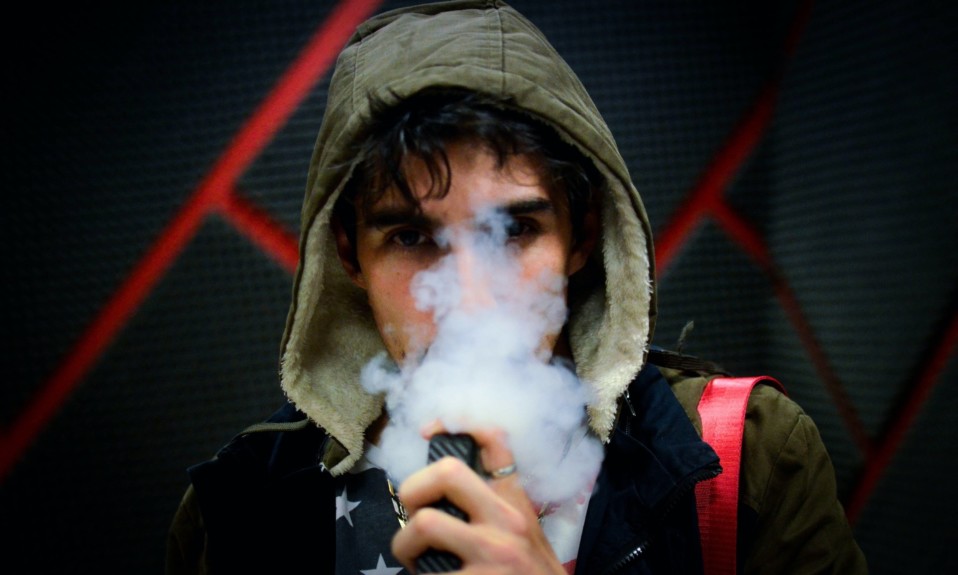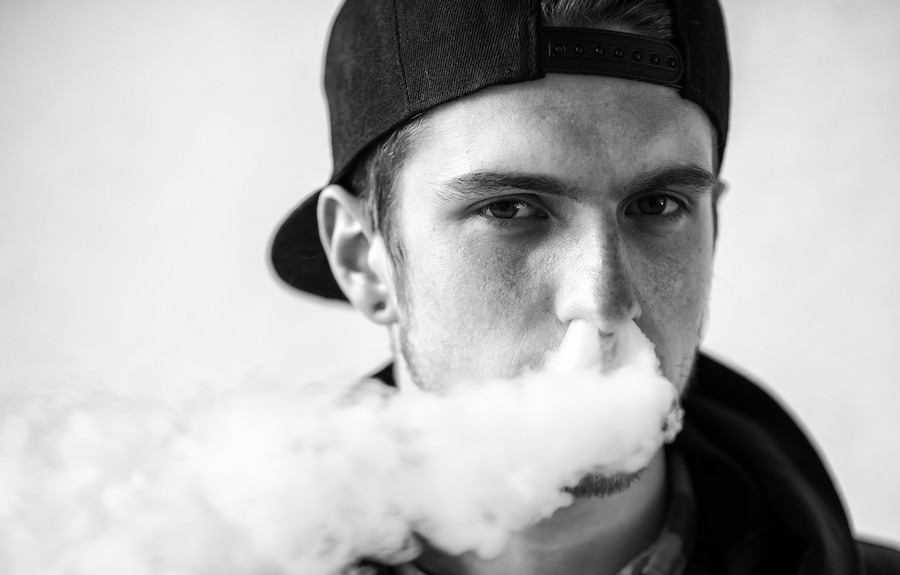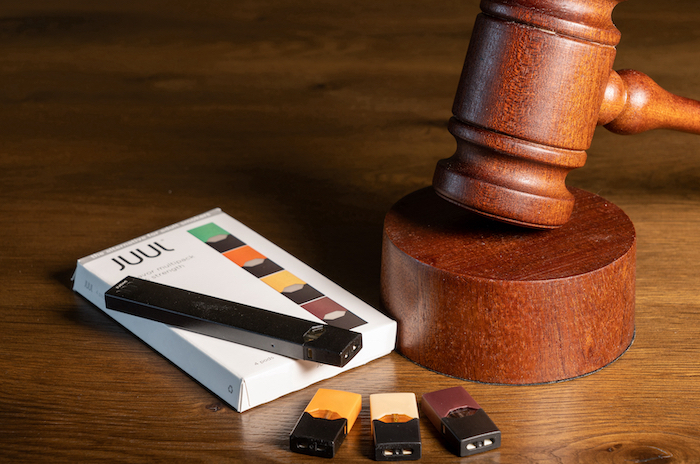Hundreds of school districts across the country are battling the vaping giant, charging that it deliberately markets its products toward children
By Jennifer Taylor
About an hour and a half north of New Mexico’s border with Texas sits the small town of Alamogordo, N.M. Its 14 schools, from pre-K to high school, serve about 5,600 students, some 60% of whom receive free or reduced lunch and a high proportion of whom are from households below the poverty line. Within the walls of Alamogordo’s schools, officials are bearing witness to an epidemic playing out in towns—rural, suburban and urban, rich and poor—all across the country: teen vaping.
Last fall that phenomenon took a stunning turn in Alamogordo when a local news account reported that a student in the third grade was found with a vaping device. By November, the Alamogordo Public School (APS) district took a major step and joined more than 650 other U.S. school districts in one of the largest multidistrict lawsuits of its kind. The schools are taking on Juul, the country’s largest e-cigarette manufacturer, for its role in the vaping epidemic. The hope, according to APS officials, is not just to rid their schools of vaping devices. They also want to hold Juul accountable, educate their community about the dangers of e-cigarettes, especially on minors, and recoup money spent wrestling with the problem.
The lawsuit accuses Juul of deliberately designing its products to attract minors; using marketing that misrepresents or omits that its e-cigarettes are more potent or addictive than cigarettes; selling products that are defective and unreasonably dangerous due to their attractiveness to minors; and promoting nicotine addiction.
Schools: The Frontline of the Vaping Epidemic
Kenneth Moore, Alamogordo’s superintendent and formerly the district high school principal, couldn’t confirm the third-grade account specifically but told TreatmentMagazine.com that he didn’t doubt such an incident could happen, because vaping devices are showing up in elementary schools. And vaping is rampant in high school.
“It’s heartbreaking,” Moore says.

Moore describes a whack-a-mole-like scenario playing out in the hallways of Alamogordo’s schools. Vaping’s odor is subtle, and the technology is designed to make it nearly undetectable.
“The vape pens are so small, and you don’t know what you are smelling until you walk through a cloud of it [and wonder], Hey, was that a vape?”
The federal lawsuit was filed in October 2019 in U.S. district court in San Francisco, as the epidemic was peaking. School districts of all sizes, as well as individuals and other government entities, continue to join the suit, which is presided over by Judge William H. Orrick in the Northern District of California.
“Now, a new generation of nicotine addicts is being created through these novel vaping devices through the use of appealing flavors and packaging.”
—From the 2020 study “Vaping-related Lung Injury”
Plaintiff attorneys continue to seek out school districts across the country to join the litigation, and they have shown up at school board meetings to explain the suit to officials. Just last month, attorney William Shinoff of Frantz Law Group spoke in a video call with the school board of Silver City, N.M., explaining that the case focuses on charges that e-cig manufacturers like Juul intentionally market their product to children.
“As a result, we now have a new generation of nicotine addicts,” Shinoff said during the call. He also characterized the case not as a class action but a mass action. “Each school district that is involved in this case has their own lawsuit on file,” he noted.
Representatives of Juul did not respond to TreatmentMagazine.com’s request for comment.
The Dangers of Vaping
Researchers are beginning to piece together the dangers of e-cigarettes. A 2020 paper explains that while e-cigarettes were developed as a replacement device for conventional tobacco cigarette smokers, documented success in cessation has been limited, and vaping is unproven as a tool to quit smoking. Additionally, while e-cigarettes are used by many conventional tobacco smokers (dual users, they’re called), sole use of e-cigarettes in young adults and adolescents has skyrocketed.
“This is concerning as use of tobacco products had been declining worldwide for over 50 years,” the paper’s authors note, “and now, a new generation of nicotine addicts is being created through these novel vaping devices through the use of appealing flavors and packaging. Even more concerning is that children and teenagers who use E-cigarettes are more likely to smoke conventional tobacco.”
Local governments have taken notice of the threat to schools and have provided resources to combat the problem. In Colorado, for instance, Boulder Valley school district has received more than $1 million in city and state grants to spend on anti-vaping and other substance misuse prevention measures. Other districts are spending thousands on vaping detectors.
The New York-based anti-vaping advocacy group Parents Against Vaping e-cigarettes (PAVe) supports the schools’ stance. But PAVe founders Meredith Berkman and Dorian Furhman said efforts are especially challenging for schools in underperforming areas because many do not have the needed resources to contend with the sheer volume. “At the height of the vaping epidemic there were kids vaping in the classroom, there were kids going to the bathroom to vape, and they were leaving the classroom every five or 10 minutes,” says Furhman. “So they were falling behind, and they were getting in trouble.”
“Whether we financially get anything from it or not, I really don’t care. I want to see the manufacturers held accountable.”
—Kenneth Moore, superintendent, Alamogordo Public School District
Back in Alamogordo, Moore first got wind of the lawsuit through the school district’s attorney. Once the board realized what was to gain if the litigation was successful, it voted unanimously to join. The district is working on quantifying how vaping in school has impacted the district financially. For now, Moore points to the elevated number of disciplinary actions that involve vaping; the distraction caused when students are vaping in plain sight; the additional policing of bathrooms; and the increased time spent investigating vaping reports at the middle and elementary schools. Moore hopes to recoup some of the costs associated with vaping inside the schools and use the funds to help educate the community. But that’s not the main motivation.
“Whether we financially get anything from it or not, I don’t really care,” he says. “I want to see the manufacturers held accountable.”
Top photo: Nery Zarate














